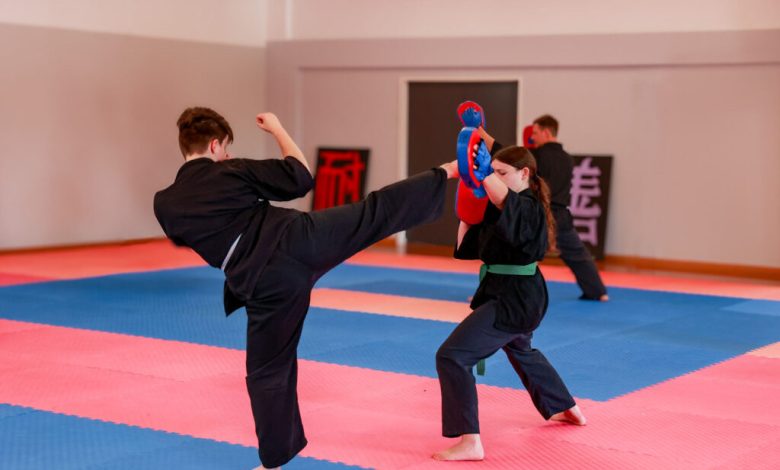Tai Chi and Qigong: Ancient Practices for Modern Health and Wellness

Introduction to Tai Chi and Qigong
In today’s fast-paced world, many individuals seek ways to cultivate balance, inner peace, and physical vitality. Tai Chi and Qigong, two ancient Chinese practices, have emerged as powerful tools for promoting holistic health. Rooted in traditional Chinese medicine and philosophy, these gentle movement arts combine physical postures, slow and fluid motions, controlled breathing, and focused meditation. Despite their ancient origins, both Tai Chi and Qigong are increasingly embraced in modern wellness routines, rehabilitation programs, and fitness centers across the globe.
Tai Chi is often described as “meditation in motion,” while Qigong is regarded as the art of cultivating and balancing qi (vital energy). Though distinct in their structure and origins, the two disciplines share overlapping principles and benefits. Together, they form a comprehensive approach to physical, mental, and emotional well-being.
Origins and Philosophy Behind the Practices
Both tai chi and qigong trace their roots back thousands of years and are deeply connected to Chinese medicine, martial arts, and Daoist philosophy. The concept of Qi—the life force or vital energy that flows through all living things—is central to both practices. In Chinese thought, good health depends on the smooth and balanced flow of qi throughout the body’s energy channels, or meridians.
Tai Chi Chuan (Taijiquan) was originally developed as a martial art but evolved into a gentle, graceful form of exercise that emphasizes balance, coordination, and relaxation. It draws on the yin-yang principle, focusing on the interplay between opposing forces and the continuous flow of energy.
Qigong, meaning “energy work” or “energy skill,” encompasses a broader category of healing exercises and meditative practices. It can be dynamic (involving movement) or static (involving postures or visualization), and may be practiced for health, spiritual development, or martial enhancement.
The Practice of Tai Chi
Tai Chi involves a series of slow, deliberate movements that are performed in a continuous, flowing sequence. Each movement transitions seamlessly into the next, promoting mind-body coordination, relaxation, and heightened awareness. There are several styles of Tai Chi, including Chen, Yang, Wu, and Sun, each with its own form, rhythm, and level of complexity.
Practitioners focus on proper body alignment, weight shifting, and rootedness to the earth. The knees are often slightly bent, the spine erect, and movements initiated from the core. Breathing is deep and synchronized with motion, encouraging a state of inner calm and concentration.
Tai Chi can be practiced solo or with partners, and it’s often performed in parks, community centers, and wellness retreats. Despite its gentle appearance, Tai Chi builds strength, flexibility, and endurance, and is accessible to people of all ages and fitness levels.
The Practice of Qigong
Qigong consists of exercises designed to cultivate and balance qi through posture, breath control, movement, and mental focus. Unlike Tai Chi, which is usually practiced in structured sequences, Qigong routines vary widely depending on their intended purpose—health enhancement, medical therapy, martial arts, or spiritual cultivation.
Some common forms of Qigong include:
-
Medical Qigong: Used as a therapeutic practice to treat illnesses or boost immunity
-
Martial Qigong: Strengthens the body for martial arts performance
-
Daoist and Buddhist Qigong: Used for spiritual awakening and meditative awareness
Qigong exercises can be as simple as standing still and visualizing energy flow or as complex as coordinated movement sequences. It is often easier to learn than Tai Chi and can be customized for people with physical limitations or specific health goals.
Health Benefits of Tai Chi and Qigong
Extensive research has confirmed the wide-ranging health benefits of both Tai Chi and Qigong. Their slow, mindful movements promote physical health, mental clarity, and emotional balance. Key benefits include:
Improved Balance and Coordination
Both practices enhance proprioception—the body’s ability to sense its position in space. This makes them highly effective for improving balance and preventing falls, especially among older adults. The gradual shifting of weight and increased leg strength developed through Tai Chi is particularly useful for maintaining stability.
Reduced Stress and Anxiety
Tai Chi and Qigong induce a relaxation response by calming the nervous system and reducing cortisol levels. Deep breathing and meditative focus help quiet the mind, making these practices effective for managing stress, anxiety, and emotional turmoil.
Enhanced Cardiovascular Health
Although they appear gentle, both Tai Chi and Qigong offer aerobic and cardiovascular benefits. Studies show improvements in heart rate variability, blood pressure regulation, and circulation. Practicing regularly can also improve respiratory function and oxygen utilization.
Chronic Pain Management
Tai Chi and Qigong have been used as complementary therapies for chronic pain conditions such as fibromyalgia, arthritis, and lower back pain. The gentle, repetitive movements enhance joint mobility and reduce muscle tension without placing undue stress on the body.
Strength and Flexibility
Practitioners gradually develop core strength, leg power, and flexibility. The controlled movements stretch muscles, promote proper posture, and increase overall muscular endurance, particularly in the lower body.
Immune System Boost
Qigong in particular has been linked to immune system modulation, helping the body fend off infections and recover from illness more quickly. Some studies have shown increased levels of immune cells and improved inflammatory responses in regular practitioners.
Mental Focus and Cognitive Function
The emphasis on mindful awareness enhances concentration, memory, and cognitive function. Tai Chi has been shown to improve executive function in older adults and is even being explored as a tool for slowing cognitive decline in people with early-stage dementia or Alzheimer’s.
Tai Chi and Qigong in Modern Medicine
The integration of Tai Chi and Qigong into mainstream healthcare is growing rapidly. Hospitals, rehabilitation centers, and wellness clinics increasingly offer these practices as part of integrative health programs. They are often recommended by physicians for managing conditions such as:
-
Hypertension
-
Type 2 diabetes
-
Depression
-
Osteoporosis
-
Chronic fatigue
-
Cancer recovery
-
Parkinson’s disease
Medical research institutions have conducted numerous clinical trials validating their safety and effectiveness, which has led to endorsements from organizations like the World Health Organization (WHO) and the National Institutes of Health (NIH).
Spiritual and Philosophical Dimensions
While many practice Tai Chi and Qigong for physical health, these disciplines also offer deep spiritual and philosophical enrichment. Rooted in Daoist and Buddhist teachings, they emphasize harmony with nature, mindfulness, inner stillness, and the interconnectedness of body and spirit.
Practitioners often report increased self-awareness, emotional resilience, and a deeper sense of purpose. The flowing movements reflect Daoist principles such as “wu wei” (effortless action) and living in accordance with the rhythms of nature.
Qigong meditations often include visualizations of energy moving through the meridians or gathering at energy centers known as Dantian, helping to refine inner focus and energetic balance.
Differences and Similarities Between Tai Chi and Qigong
While Tai Chi and Qigong share many commonalities, they also have key differences:
-
Structure: Tai Chi follows a set sequence of movements (forms), while Qigong can be practiced in shorter, more flexible routines.
-
Purpose: Tai Chi originated as a martial art with defensive applications, whereas Qigong is primarily a health and energy cultivation practice.
-
Complexity: Tai Chi forms often take longer to learn and master, while Qigong can be simpler and more accessible to beginners.
-
Movement Style: Qigong may include both still and moving exercises, while Tai Chi is typically always in motion.
Despite these differences, both emphasize breathing, relaxation, posture, and the flow of qi. Many practitioners combine the two for a more comprehensive practice.
How to Begin Practicing Tai Chi or Qigong
Starting your journey with Tai Chi or Qigong doesn’t require expensive equipment or a gym membership. Comfortable clothing, a quiet space, and an open mind are enough to begin. Here are some steps to get started:
-
Find a Qualified Instructor: Whether online or in-person, working with a certified teacher ensures correct form and safety.
-
Start with Basics: Begin with foundational movements, breathing techniques, and short routines. Gradually progress as you build strength and confidence.
-
Be Consistent: Daily or regular practice—even 10 to 20 minutes a day—can yield significant health benefits over time.
-
Listen to Your Body: Both practices are gentle, but always move within your own range of motion and comfort.
-
Join a Community: Practicing with others can provide motivation, feedback, and a sense of connection.
Conclusion: Ancient Wisdom for Modern Wellness
In a world where stress, chronic illness, and mental fatigue are increasingly common, Tai Chi and Qigong offer a gentle yet powerful path to healing and self-discovery. These time-honored practices bridge the gap between body and mind, offering benefits that extend far beyond physical fitness.
Whether you seek relaxation, physical rehabilitation, emotional balance, or spiritual growth, these arts provide a holistic foundation for lifelong wellness. As more people around the world discover the profound simplicity of Tai Chi and Qigong, their ancient wisdom continues to find relevance in the modern age—proving that true health is not just about doing more, but doing less with greater awareness.



